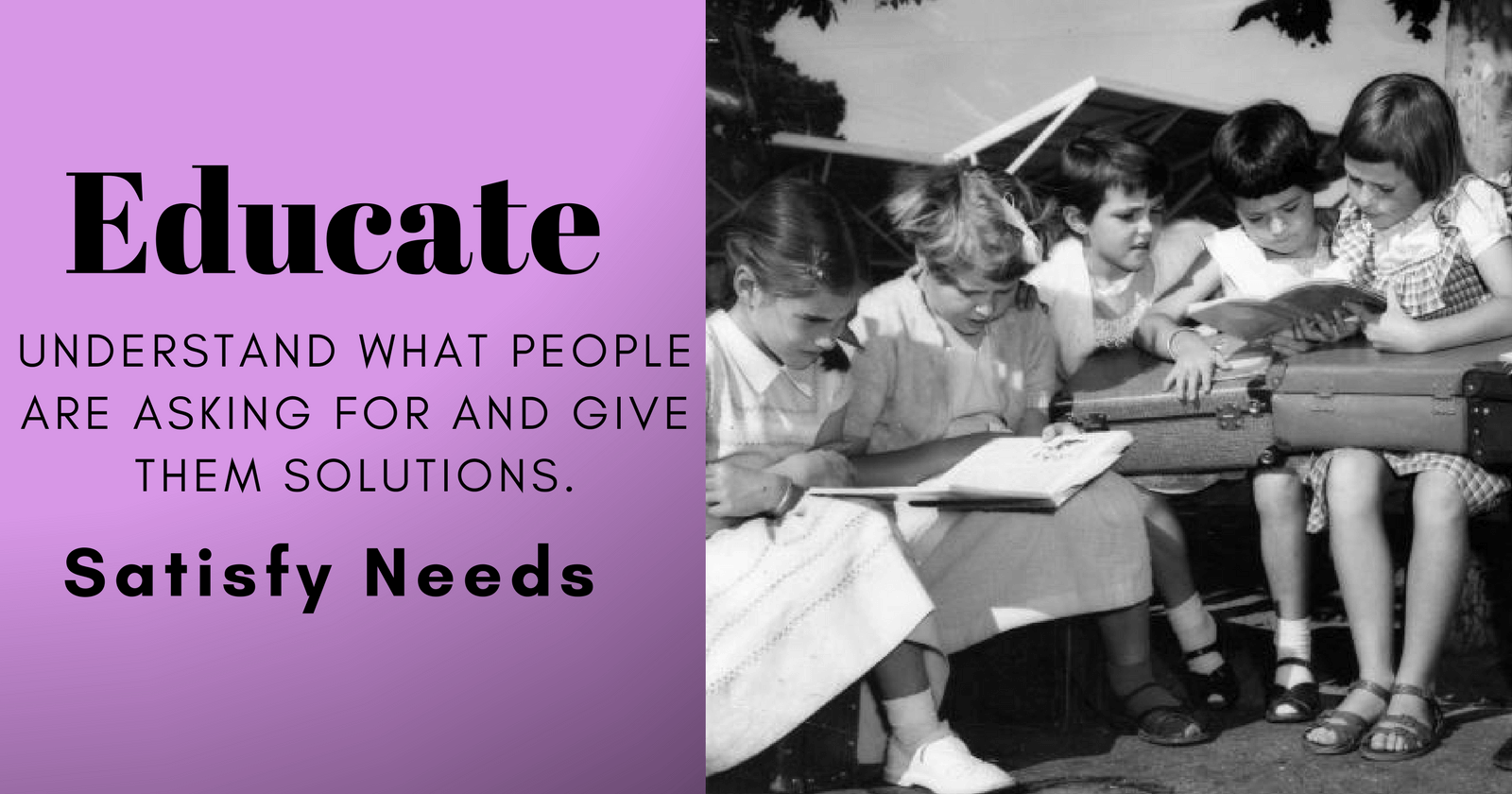According to estimates from Statista, by the end of 2017, there will be around 2.7 billion social media users in the world – a figure that is expected to rise by about 7 percent each year.
This fact alone should cause all social media marketers to sit up and consider the opportunities for their own marketing campaigns.
But let’s be honest.
While opportunities abound, social media marketing is complicated.
Targeting the social media crowd is like targeting a moveable feast. It is never static.
People come and go quickly in social media and their interests change from one day to the next.
So, before you invest heavily in any social media marketing campaign, you really need to understand the landscape.
The rewards can be high and also immediate if you strike the right note with your target audience. Miss the target and you could exhaust your social media budget very quickly.
And, while it’s important to build relationships with a social media environment, you must remember that relationship building is simply a strategy it is not the end goal. Foremost business the end goal of any social media marketing strategy is to boost engagement and increase conversions.
You may be well branded, you may be well-known, but if you are not increasing the bottom line through your social media marketing, then you cannot really justify the investment.
With that in mind, here are seven strategies you can develop for your own industry in order to boost conversion through social media marketing.
These strategies are fairly straightforward. It’s up to you to put in the work and develop a strategy into an effective marketing tool
1. Schedule Your Social Media Interactions
One of the great things about social media is that you could have followers from all over the world.
However, on the face of it that makes interaction a new kind of challenge. As anyone who has ever tried to organize a webinar or social media hangout knows, trying to interact with people within different time zones is not always easy.
Thankfully, we have some great social media tools to overcome the tyranny of distance.

Much of your interaction with your social media followers can – and should – be scheduled according to peak use times and according to individual time zones.
People trust consistency. If you can interact with your audience at regular times during the week, whether in person or through automated tools, you’re going to develop the kind of trust which can lead to long-term brand loyalty and higher conversions.
DrumUp, is a relatively new tool that enables you to schedule posts for sharing on Facebook, Twitter, and LinkedIn. In that sense, it’s no different to Buffer or HootSuite.
It will automatically calculate the best time to engage your audience and schedule your posts or snippets.
Perhaps the standout feature for DrumUp is its simplicity of use.
The free account lets you can put all of your scheduling on autopilot through a single interface. It allows you to quickly bring in an RSS feed and group your social accounts.
The ability to do everything you need to do for scheduling multiple accounts and then share it all through a one-click function is a huge improvement on other social media management programs.
2. Repurpose & Reshare Your Content
If you have suitable content that’s worth sharing, you should consider scheduling it for future shares.
For this to be effective the content you share needs to be unique.
So for example, you may have shared a link to an article initially with a simple excerpt on what the article was about.
If the article has value and is worth sharing again at some point in the future, consider taking a different snippet, question or quote from the same content.

The content may point to the same source. By reshaping your content for social media, you will turn the content into something unique.
This is an important step that will support the preceding strategy of scheduling and at the same time separate you from vain repetition and spamming.
Tweak your message whenever sharing your content for the second or third time by asking a question, creating a new piece of rich media, or pulling a quote from the post.
3. Optimize the Message for Each Network
All of us are aware that each social media network handles images and text differently. Therefore, you have to be knowledgeable on the strengths of each social media network that you could take advantage of by adding variety to your posts.
For instance, Twitter has a limiting 140 characters (though 280 character tweets are in testing). However, what Twitter lacks in word count it makes up for in images.
Visual media can have a significant impact on social media marketing.
 150 percent more retweets for tweets with images is a testimony to the fact that Twitter is ideal for image sharing.
150 percent more retweets for tweets with images is a testimony to the fact that Twitter is ideal for image sharing.
Likewise, Facebook posts with pictures get 53 percent more likes than the average post, and LinkedIn posts with images acquire 98 percent more comments.
People respond well to visual stimulation, and as a general rule, you should produce almost every piece of shareable content alongside a suitable image.
4. Ensure Links Point to Relevant Landing Pages
By landing pages I don’t necessarily mean sales copy: Single full-width pages with an advertisement.
A landing page is a page you want the site visitor to land on and should be relevant to the link on social media.
In other words, it should deliver what it promises. And since no one link can promise everything, you should make sure that your links and the content surrounding your social media links lead to where the user anticipates.

Avoid unpleasant and disappointing surprises.
Remember also to put your social media channels on your website as well as directory listings, forum and wherever else you can put them. This helps with visibility.
Your social media networks and your website should have a good relationship with each other. Take the time to ensure that all of the links shared on your social media posts work and point back to the page you want users to engage in.
5. Pay Attention to What’s Working
To know what’s working you need to track your shares and social media content and understand how to utilize your analytics data.
There are significant tools that can help you in monitoring the results of your strategy, such as Kissmetrics and Google Analytics. These tools can help you save a lot of time in the long run by avoiding the guesswork.

Analyze your data to find out what posts are working and how you can duplicate their success. Intuition isn’t enough. You need objective data, and you need to run with what the data tells you.
Most businesses are content with simply having a scheduled social media presence. However, this won’t deliver a return on investment.
Don’t be afraid of data and analytics. Data is your friend and there are analytical strategies that can get you some quick wins without having a lot of knowledge.
Monitoring your analytics data is essential for your promotional and content strategies including when to share your post and what message works best. You can also inspect visitor data to know how, where, and when most of your site traffic is coming from.
6. Make Your Social Content Informative
Your social media content needs to provide a solution or at least some usefulness in order to be considered valuable.
While emotive and affectatious gimmicks may generate buzz and curiosity, they don’t usually lead to long-term sustainability. In other words, once you have jumped out of a spaceship and descended through the Earth’s atmosphere with a parachute, all else tends to be downhill.
People want solutions.
People want relief from pain, answers to complex questions, and information that helps them overcome an obstacle or achieve a goal.

Your post doesn’t need to be long to be informative. In fact, the more succinct they are, the better. People have little to no time for your preamble.
The reason why many people struggle with this concept is that they’re not really expertise in the field they are trying to operate in.
But, if you are an expert, and if you know what you’re talking about, you will be able to provide legitimate solutions in the industry that you’re operating in.
7. Create Captivating Headlines
That said, the solution to emotive hype is not dullness or boredom. You still need to captivate the attention of your audience. And the first and often last place to do that is through your headlines.
Your headline is easily one of the most important parts of your content.
Your headline is the first thing that people will read your post. A comprehensive blog with an unimpressive headline will go unread.
Therefore, you have to think creatively and master the writing of your headlines before hitting the “publish” button.

As with your blog and guest posting so too with your social media efforts.
Here are two insights to take on board when writing your next social media headlines:
- It may surprise you to learn that negative headlines tend to do better than positive headlines.
- Headlines with numbers also tend to do better than other headlines.
Conclusion
Maintaining an effective presence on social media in a way that increases customer allegiance and conversion takes time.
You need to be systematic and patient in your approach to social media marketing, and you need to constantly way up and analyze the data and the results of your investment.
More Conversion Rate Optimization Resources:
- 6 Ways to Increase Soft Conversions Before the Sale
- Taking a Deeper Look at Conversion Paths in Google Analytics
- 5 Disasters in Checkout that Destroy Conversion Rates
Image Credits
Featured Image & In-Post Photos: Created by David Trounce using Pixabay, Pexels CC0 License and Canva, October 2017.


